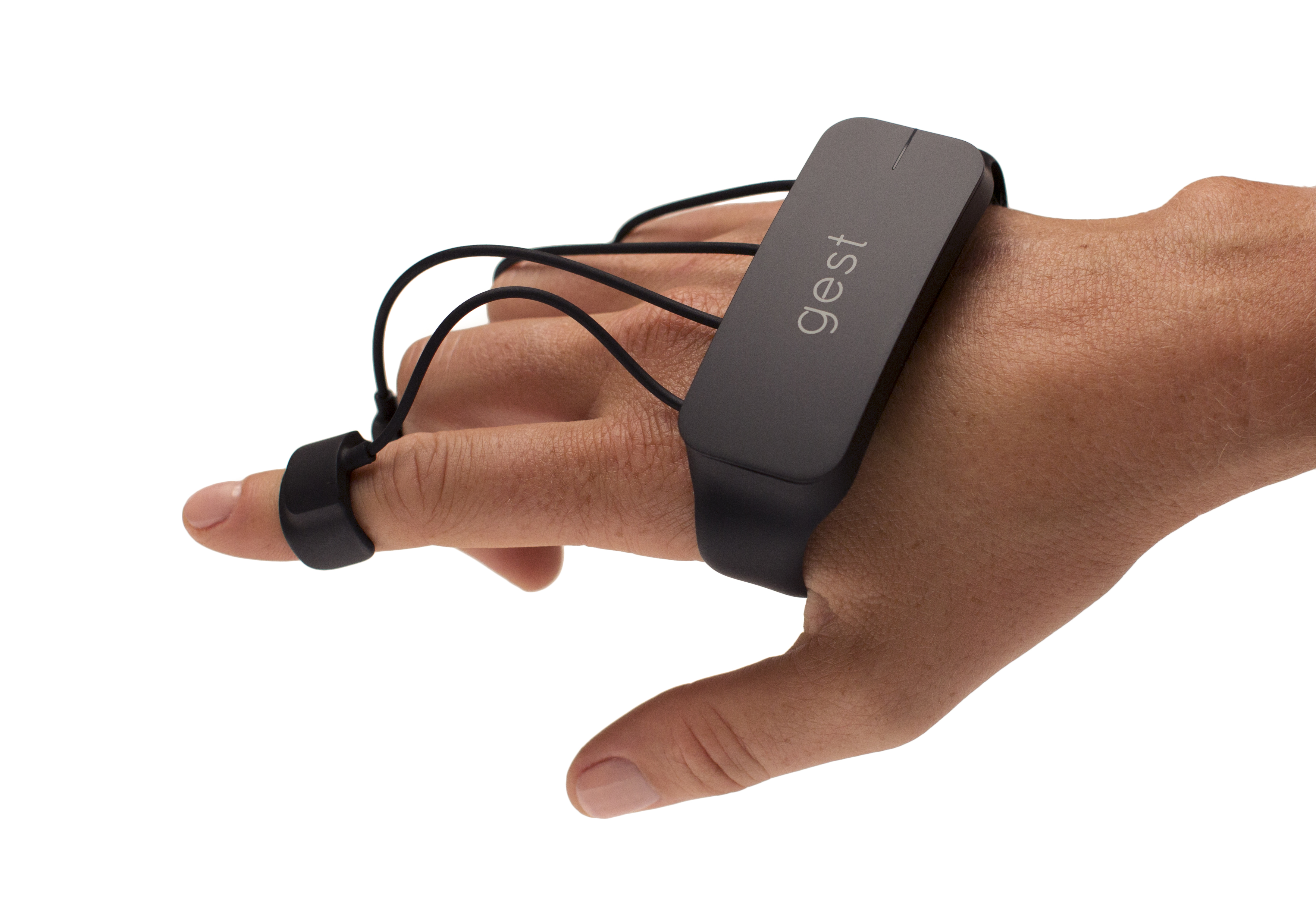The term “Hands Free” is about to land an upgraded definition in our fast and furious techie world. Welcome to Gest, our latest and coolest gadget that may change the way we navigate and type on our computers.
Gest is a wearable tech inspired by Iron Man, where Tony Stark is seen in his lab swiping his hand to browse on a huge amount of data. The minimalist design of the wearable hand tracker is a product of ingenuity and innovation.


Apotact Labs is responsible for developing Gest. At first glance, it doesn’t look like much. It only has black strap that is worn around the palm with four adjustable finger bands connected by wires. But the gadget actually uses gyroscopes, accelerometers, and magnetometers to provide touchless control with the potential of replacing mice and keyboards.
Mike Pfister, co-founder and CEO of the interface company, stated that he came up with the idea because of the frustration operating tiny onscreen keyboards causes.
He said, “The keyboard and mouse are starting to make less sense as our devices get smaller. We need a fundamentally new input method to control these devices—something that gets back to the basics as how we interact as humans. That’s why we created Gest.”
Almost two years ago, his team created the very first prototype for Gest in just one day during a hackfest. The prototype went through countless redesigns before ending up on Kickstarter. They are trying to raise $100,000 to fund the production of Gest.



Pfister is not the first one to probe on gesture controls, though. Virtual reality gloves like Manus, Elon Musk, Leap Motion, and SpaceX came before Gest. However, Gest has the upper hand with regard to practicality and versatility.
So far, the most promising feature of Gest is air typing, in which the user can type without a keyboard.


The tech is still in its experimental phase. It currently relies on predictive text to check for errors, much like most smartphone keyboards. The apparatus is also going to offer a separate input method designed for virtual reality. If this device becomes popular in the future, a drastic change in the lives of mobile device users will occur.
Leap Motion and Xbox Kinect are true motion trackers, but Gest isn’t. It doesn’t track exact motions. Instead, it gets commands from hand movements and processes the data into actions.
The primary features of Gest are protability, long battery life, and flexibility. It is capable of connecting to any device that supports Bluetooth low energy. However, because of that same advantage, Gest is facing an adoption hurdle. It won’t function unless the mother device has special support for it.
Gest is expected to launch in November 2016 and will offer full support for Photoshop. Although he isn’t currently affiliated with Adobe, Pfister said that his team is “focused on building a really great experience with Photoshop using Adobe’s SDK [software development kit].”
Apotact Labs formally opened up the development kit for Gest, hoping to encourage developers to create new integration, use cases, and applications for the gesture control system. Not only that, the company will also allow developers to access custom skeletal models, motion-processed data, and raw sensor data to provide them with important information for the development of their creations.
“We don’t need to work directly with developers. It’s important to us that we give them the room to create and contribute on their own. We value that greatly,” according to Pfister.
The Kickstarter campaign is doing pretty well. In fact, it is close to meeting its goal. Gest is available to early-bird backers for only $99 per hand. When Gest hits the market, it can be bought at $200 per piece.




